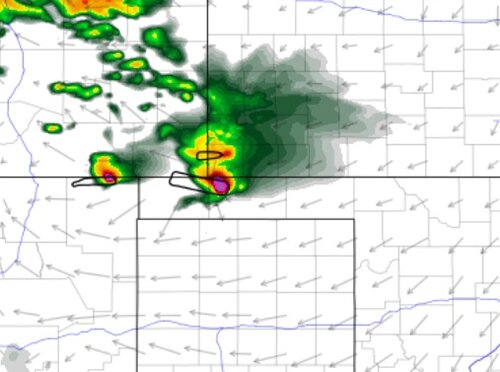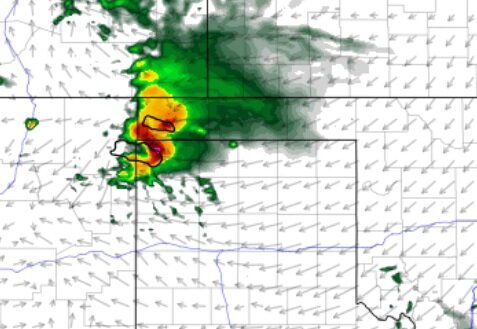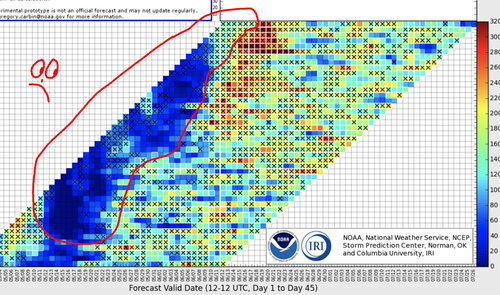@Mark Farnik I appreciate your thoughtful post and glad to get some other veterans back to being active here. I hope you will continue to post and encourage others to do the same. Stormtrack has a rich heritage. Its niche focus and curation really should make it the central gathering place for all chasers, rather than the cesspool of social media with its random algorithmically-generated feeds that mix chasing and non-chasing topics.
But that's not what this post is about; I wanted to write a bit more about the state we find ourselves in, and perhaps offer some alternative perspective to lighten the mood and bring some optimism.
I am right there with everyone complaining about 2023, and feeling like it is just the most recent year of what has become an annual tradition, like rooting for a losing sports team and saying "better luck next year." But I have to wonder about a few things that may be unduly influencing our negative perception of the seemingly downward trend in chasing prospects. I'm not saying I know the answer - just throwing it out there for consideration:
1. How much of this perception is due to nostalgia bias - i.e., thinking the past is better than it was, and remembering the "good" but not the "bad"?
2. How much of this perception is due to recency bias - i.e., allowing recent impressions to overshadow the past?
3. If chasing prospects are really getting worse, how much is due to climate change (implying that it will not improve during our lifetimes) versus longer-term but non-permanent - perhaps decadal - cycles, such as is now known to exist for hurricane activity?
Most of our perception about the decline in chasing prospects is anecdotal. It is very difficult to prove empirically, even with all the tornado statistics that exist, because of the subjectivity in what constitutes a good chaseable event or a good season. And there are no statistics to my knowledge on photogenic vs non-photogenic tornados, classic vs LP vs HP supercells, supercells with good structure and grungy structure, etc. As the seasons accumulate, what one remembers as a "good" year could be because of just one particular day, without regard to the rest of the season (i.e., nostalgia bias).
For chase vacationers, a season that is "good" from start to finish certainly increases the probability of a good one or two week chase vacation. But every season, no matter how good it is judged to be overall, has good weeks and bad weeks. It's the luck of the draw that determines what you end up with on a chase vacation. I love to use 2013 as an example of this. Although Mark includes it in his range of good years from 2007-2014, my recollection is that chasers were complaining how bad the season was because it was pretty dead except for the last two weeks of May. But if those were the two weeks of your chase vacation, you pretty much hit the jackpot.
I started chasing in 1996. When I sat down to write this, I briefly considered each year. Yes, believe it or not, I do have a pretty good recollection of each and every year. Not the details, but the essence, and the overall impression of which years were good and which years were not. My own nostalgia bias may mean that what I call a "good" year was really not good. And maybe some of the years I call "bad" were only because of when my trip was scheduled, or because of my own failure. I did not take the time to go back into my notes and journals for verification or for details. But I think that's OK, because *perception* is what we are really talking about here isn't it?
I will spare everyone the details of each of the 25 years I chased from 1996 to 2023 (I missed three years, when my children were born and the Covid year), and will instead just offer a summary. Again, I admit some of what I consider "good" vs "bad" is likely driven by the timing of my chase vacation, and/or by my own success or failure. But that's also part of the point - so much more matters than just the quality of the weather itself.
My very first chase trip was on a tour the first two weeks of June in 1996. (A year after some of the bigger events had happened in Pampa, Friona, Dimmitt, etc.; I seem to remember there had been a pretty famous first week of June 1995.) Even back in 1996, it was a pretty dead pattern. No tornado, and probably just a few supercell days. In 1997 I was only able to chase for a week; I remember there was an outbreak day in the area west of Wichita (e.g., Harper County); that was my first tornado day. From 1998 through 2002, I only saw two tornados (Basset, NE in 1999, my first year chasing independently after three years of tours, and Trinidad in 2001). I don't remember there being regional outbreaks in any of these years. 2003 was an active year that I unfortunately had to miss, but I remember most of the activity being in early May - not a time I would normally have scheduled my trip anyway. 2004 was good, but 2005 and 2006 were not. So that's about 10 years of chasing before the period Mark identifies as being pretty great, and I would say that this particular stretch of 10 or so years from 1996-2006 was pretty poor overall, with only about one-third of them leaving me with a positive impression. Again, yes, somewhat anecdotal, but my point is I think that affects impressions for all of us.
So now we're in the 2007-2014 period that Mark highlights. I missed 2007, but I believe that was another early-May year that shut down after that. Anyway, yeah, I have to agree, if I look at a simple tally of my own "positive" and "negative" trips during the seven years I chased, I'd say all were pretty good, with 2009 the only exception - isn't that the year even VORTEX couldn't get anything until June in Wyoming? I'm calling years "good" only because I saw tornados (including 2012 - Lacrosse KS). I can't recall how good the "other days" were. In my recollection, there were higher-end outbreaks only in 2007, 2011 and 2013. My 2010 highlight was Campo, and that was a mesoscale event; the rest of the trip was a disappointment, although I think it is generally perceived as a good year. I don't remember anything good during my trip in 2014, but that again could have just been the result of when it took place.
And of course I agree since then it has pretty much sucked - with the exception of 2016, but those were also mesoscale events (Dodge City, Chapman). Yet I had a personal top-three chase with Selden KS in 2021. And I remember 2019 having a few good events that I just failed to capitalize on.
So as I look back at my own chasing career, I agree with Mark's favorable characterization of 2007-2014 (or at least through 2013), and with his unfavorable view of the years since then. But I would add that 1996 through 2006 were also not that great, and may not have been too much better than the last ten years have been. Hence my theory on decadal cycles: I am approaching 30 years of chasing, and I can identify a poor decade, followed by a good decade, and now another poor decade. Which would imply the pendulum is about to turn again, if my small sample has any predictive merit.
Many chasers seem frustrated when there is a lack of synoptically-evident events and reliance is upon the mesoscale. However, most of my personal best events have been mesoscale. I have actually chased very few outbreak days, whether due to unfortunate scheduling, or just lack of such days within the peak season.
In summary, I guess my points are: So much of our perception is colored by our own nostalgia bias or recency bias. I might be totally off base with my characterizations of the different seasons, but that only means that every other chaser probably is too. All of our perceptions are colored by our own results, and there really is very little objective evidence for any of this. None of it really matters, and it is not going to make me less enthusiastic or hopeful as each season approaches. Don't lose hope! There will be storms, and there are gems to be found in just about every season. Try to appreciate whatever you do get to see and experience - believe me, I get it, it is natural for the personal bar of what defines "success" to get higher the more we have already seen... But it is so important, and a life lesson, to try to appreciate the lower-end phenomena too - something I have been able to rediscover the past couple of years only by bringing my son with me and seeing things fresh through his eyes.




